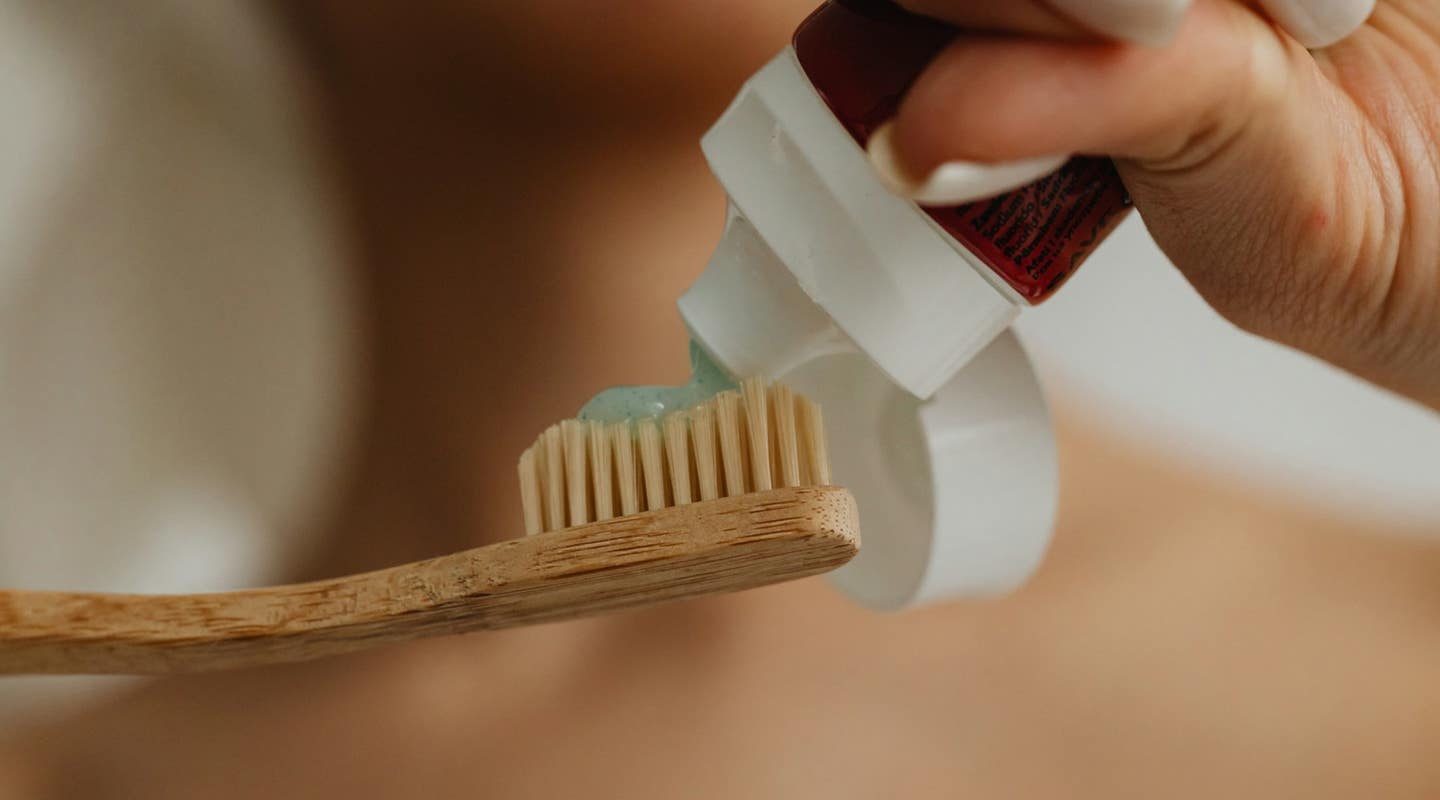Natural substance found in tea and maple offers a powerful way to prevent cavities
A maple-derived compound, epicatechin gallate, may offer a safe, natural way to prevent cavities by stopping bacteria from sticking to teeth.

Up to 90% of cavities begin with Streptococcus mutans biofilms—researchers say natural epicatechin gallate may block this process. (CREDIT: Unsplash)
Tooth decay is one of the world’s most common chronic diseases, yet many of the tools used to fight it have changed little in decades. Fluoride, alcohol-based rinses, and antiseptic ingredients dominate the shelves, but each has drawbacks. Now, new research points to a safer, natural alternative: compounds found in maple and tea that stop cavity-causing bacteria before they can dig in.
A study published in Microbiology Spectrum reveals that epicatechin gallate, or ECG, a natural polyphenol abundant in green and black tea and also present in maple, may offer a powerful way to prevent cavities. Unlike traditional agents, ECG does not rely on killing bacteria or strengthening enamel. Instead, it works by disarming Streptococcus mutans, the bacterium most responsible for dental caries, also known as cavities.
By blocking the ability of S. mutans to attach to teeth and form biofilms, ECG targets the root of the problem. Its safety, natural abundance, and low cost make it especially promising for everyday use in oral care products, particularly for young children who are more sensitive to standard antimicrobial formulas.
From Maple Curiosity to Cavity Prevention
The path to this discovery began not in dentistry, but in food safety. Scientists were originally investigating how Listeria monocytogenes, a foodborne pathogen, survives on different plant materials. They noticed something curious: while Listeria readily formed biofilms on most woods, it avoided maple.
That observation set off a chain of experiments. Researchers isolated compounds in maple—natural chemicals known as polyphenols—and found they prevented Listeria from attaching to surfaces. They also uncovered the molecular target: sortase A, an enzyme that bacteria use to anchor proteins that help them stick to surfaces. Without sortase A, the bacteria lose their grip. Because sortase A is also present in Streptococcus species, including S. mutans, researchers asked a new question: could maple compounds disarm the bacterium that causes cavities?
“Since S. mutans initiates cavities by forming biofilms on teeth and producing acid that destroys tooth enamel, we asked: could maple polyphenols also inhibit S. mutans biofilms? That question drove this study,” said corresponding author Mark Gomelsky, Ph.D., Martha Gilliam Professor of Microbiology and Director of the Microbiology Program at the University of Wyoming.
Related Stories
- Revived 1950s Parkinson’s drug shows surprising potential against Tuberculosis
- Breakthrough treatment reduces heart attack and stroke risk for type 2 diabetics
Putting Maple Compounds to the Test
To find out, the team turned first to computer modeling. Using the X-ray structure of S. mutans sortase A, they tested whether maple compounds would fit and bind to the enzyme. The models looked promising.
Next came lab tests. Researchers purified sortase A and exposed it to maple-derived compounds, confirming they blocked the enzyme’s activity in controlled experiments. Finally, the team tested whether these compounds could stop S. mutans from forming biofilms on surfaces designed to mimic teeth: hydroxyapatite disks and acrylic models. The results were striking.
Several maple polyphenols worked, but one stood out. ECG, tested at a concentration of 100 micromolar, showed the strongest antibiofilm activity and worked better than its close chemical cousin, epigallocatechin gallate (EGCG), the main polyphenol in green tea. ECG reduced bacterial attachment across different S. mutans strains, suggesting broad effectiveness.
“In a way, this study felt almost too easy. Everything fell into place just as we predicted. That’s a rare experience in science, and probably the first time it’s happened in my 35-year research career,” Gomelsky said. “We discovered that several polyphenols present in maple wood or maple sap can inhibit the sortase enzyme in S. mutans, which in turn prevents this cavity-causing bacterium from attaching to tooth surfaces.”
Why Epicatechin Gallate Outperforms
Both ECG and EGCG belong to a group of plant compounds known for antioxidant and antimicrobial properties. But this study shows they do not act equally on S. mutans. EGCG, long associated with the health benefits of green tea, can reduce biofilm formation but is less effective than ECG.
This finding may help explain why past dental products containing EGCG showed only modest results. “The moderate effects seen with EGCG-based dental products may be due to using the suboptimal compound, instead of the more potent ECG,” Gomelsky noted.
The fact that ECG is more abundant in tea than in maple sap makes it especially appealing, since tea is widely available and safe to consume. Drinking green or black tea already correlates with lower cavity rates in population studies, and ECG may be the key factor.
A Safer Approach for Children
One of the most compelling aspects of this research is the potential for safe cavity prevention in children. Conventional mouthwashes rely on alcohol, essential oils, or other antimicrobial ingredients that are not suitable for kids, who often swallow some of the liquid. Even fluoride, though effective, must be carefully dosed in children to avoid toxicity.
“Our findings suggest that ECG or other edible polyphenols with anti-sortase activity could be added to dental products to help prevent cavities through an antibiofilm mechanism,” Gomelsky said. “This is different from traditional approaches, which rely on killing bacteria with alcohol, disinfectants or essential oils, or on fluoride to remineralize enamel. The antibiofilm approach using edible polyphenols is especially appealing for young children.” A mouthwash or toothpaste formulated with ECG could offer effective protection without toxic risks, making it ideal for families.
Turning Science into Products
The University of Wyoming team is not stopping at laboratory results. Gomelsky explained that they are working to bring this discovery into real-world use. “We are actively developing plant polyphenol-based dental products through a startup founded by University of Wyoming students and the first author of this study, Ahmed Elbakush, Ph.D.,” he said.
Developing safe, effective products will require careful formulation and clinical testing. But the path forward looks promising because ECG is already part of the human diet through tea and other plant foods. Its established safety profile gives it an advantage over synthetic compounds, which often face lengthy approval processes.
Rethinking How We Fight Cavities
Cavity prevention has long depended on two strategies: killing harmful bacteria or strengthening enamel. Antibiofilm approaches such as this study offer a third way. Instead of wiping out bacteria—which can disrupt the mouth’s delicate microbial balance—ECG targets the specific process that allows S. mutans to colonize teeth.
This precision could have wider benefits. The mouth contains hundreds of microbial species, many of which play protective roles. Broad-spectrum antimicrobial products may disrupt this community, sometimes leading to side effects such as dry mouth, altered taste, or opportunistic infections. By contrast, targeting the attachment machinery of cavity-causing bacteria may leave beneficial microbes unharmed. As dental science looks ahead, polyphenols like ECG could help shape a future where oral care products are both effective and gentle.
The Road Ahead
Questions remain about the best ways to deliver ECG in dental care. Mouthwashes, toothpastes, and even chewing gums could be possible options. Researchers also want to know whether regular tea drinking provides enough ECG to have measurable effects in daily life.
More studies are needed to confirm results in human trials and to fine-tune dosages. But the groundwork is strong, and the appeal of using safe, plant-based compounds is undeniable. For now, this discovery underscores an important lesson: sometimes the solutions to persistent health problems are hidden in plain sight—in this case, in a cup of tea or the wood of a maple tree.
Note: The article above provided above by The Brighter Side of News.
Like these kind of feel good stories? Get The Brighter Side of News' newsletter.



